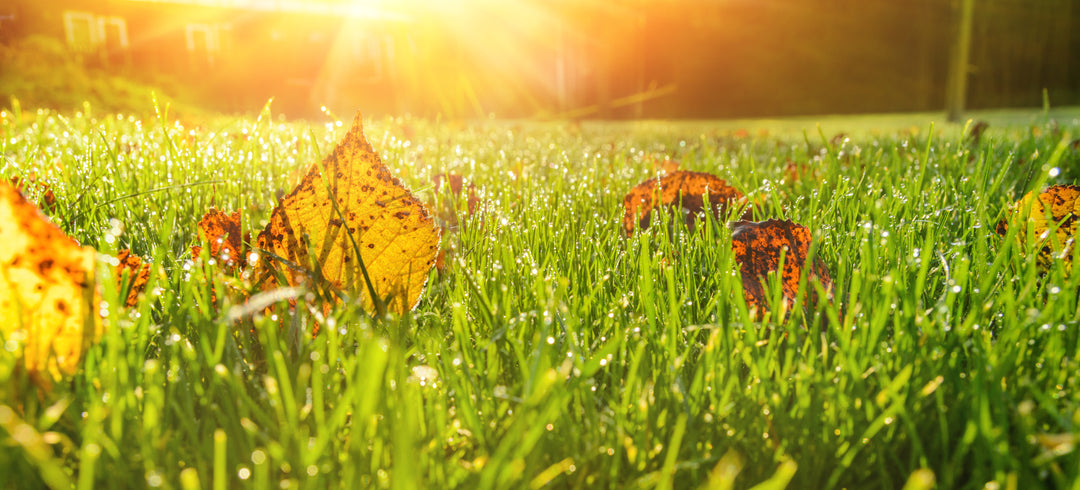Lawn disease
A well-kept lawn is at the heart of many garden owners. Kahle put, but reddish branches of grasshalts or ring-like discoloration indicate to horror the garden owners on diseases of the lawn. Rustpilz, real mildew, snow shield or witch rings are just a few of the possible rural diseases.
Then the lawn does not just look ugly - in addition, sick lawns are ideal breeding sites for moss infestation and weeds. In order not to even minimize the load capacity of the lawn, the causes of stains in the lawn must be quickly found to be able to initiate the right countermeasures. Mostly the lawn is infested by fungal diseases whose causes are wrong care and too much soil moisture.
No chance the diseases!
Quality is the A and O: In the system of a new lawn area, it depends on high-quality seeds - and different loads occur for decorative, use, sports and shadow lawns, selected quality seeds are offered. The seed can be applied to well prepared surfaces. The surfaces are kept continuously moist, the grasshalms have reached a height of about eight to ten centimeters, can be mowed for the first time.
Whether new or longer existing lawn: light, air and nutrients are indispensable.
Because a felt layer of dead plant parts and Moosen forms from time to time on the lawn, make it tighten and necessary to aerify to the lawn.
Target or aerify lawn
While it is removed with the vertically organic material such as dead grass grasses from the grass scar, the lawn is ventilated by aerifying: spiking tools, so-called spoons, ensure the introduction of cavities. The goal is an improved gas exchange. Because only a sufficiently ventilated lawn can be peu à peu with nutrients, water and air.
Lawn diseases have no great opportunities on the carefully maintained lawn.
Recognize lawns - so that the lawn lives long
Dollar Licking Disease

The dollar licking disease can be seen through brownish-yellow spots, which initially have diameter of one to two centimeters and gradually increase. The triggering fungus SCLEROTINIA homoeocarpa is by sufficient nitrogen supply and potassium fertilization, but also vertically, aerifying and regular turf mowing. The spurs of the fungus can be transferred by uncleaned garden tools and shoe soles.
Redness
Irregular, ROSTROT circular areas are symptomatic for redness - later, reddish fungal tissue follows.
The spread of the fungus is favored by nitrogen deficiency. In addition, potassium and phosphorus must be given. After the regular mowing, the line cut should be removed.
Leaf disease disease
Different colored stains on the lawns indicate the leaf stain disease caused by a conglomerate porcine. Because the fungal pore spreads quickly, prevention is announced: unnecessary irrigation is also to be avoided as well as lying line cut and foliage.
Snive
Cold and high humidity favoring snow shield, especially in spring with gray to brownish five-centimeter stains. Later, a white fungal mesh is visible in ever-increasing areas.
Increased surfaces are commonly infected with nitrogen, have a lot of daisy and increased soil pH.
Higher temperatures lead to the regeneration of the lawn until the fungus shows again in the next spring. To control recommend potassium fertilizer and significantly less nitrogen in autumn.
Real mildew
Genuine mildew causes cotton-like, gray-white pads. The fungus Blumeria Graminis is considered the causer whose expansion is favored by poorly ventilated soils, too much shadow and lack of potassium and phosphorus. On the other hand, fertilizers increase the susceptibility with lots of magnesium, calcium and nitrogen.
Rust mushroom
This comparatively light summer and autumn disease manifests itself by brown, mushroom-like stains on the stalks, whereby the spread of the rust mushrooms is favored by too much moisture. Regular grazing and good nutrient supply bend as well as the regular floor ventilation. Well set pH values strengthen the grass area as well.
Root and stalk rot
The root and stem rotation shows through round stains with about 50 centimeters diameter. In it, the dead grass is colored whitish to weak pink. The triggering fungus fills the root plant and is favored by high soil moisture and compacted soil structure.
The root and stem rotor is fought by ventilation measures, regular cuts and avoiding over fertilization.
Witch rings
When annular structures occur with both dead and reinforced edge areas, various mushrooms provide so-called witch rings, which can extend meter-wide on large areas.
Compressed floors and nutrient deficits promote the spread. Over-terrible fruit bodies must be disposed of. In addition, the lawn is to be well ventilated and fertilized evenly.
Overly compacted soil can even require a newly friendly of the lawn.
Most of the lawns can thus be prevented by regular aerification, a well-ventilated ground is a prerequisite for a well-kept grass. For lawns up to 200 m², we have developed our manual aerifier: the Scratch.




